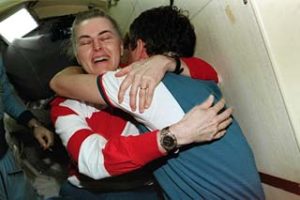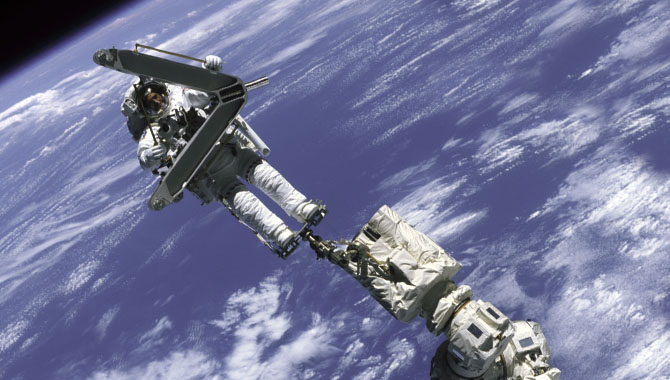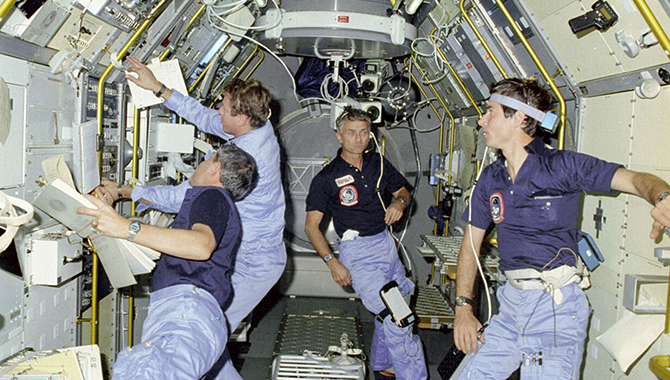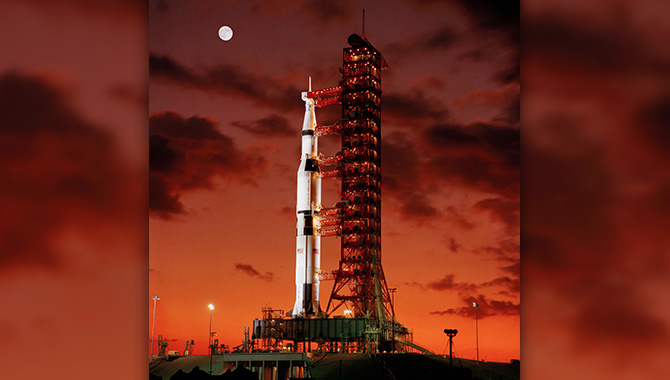
STS-79 came to a close as Atlantis landed at KSC on September 26, 1996.
Photo Credit: NASA
The story of the Space Shuttle Program is one of overcoming obstacles through hard work and innovation. During STS-79, astronaut Shannon Lucid’s efforts set new records for the program.
For four years, from 1994 to 1998, a key space shuttle initiative was the Shuttle-Mir Program. Throughout this collaborative venture, NASA astronauts engaged in long-duration space missions on the Roscosmos space station while Russian cosmonauts flew on the orbiter. Research into life sciences and microgravity was an important component of the program. The collaboration provided a foundation for future partnerships, including the International Space Station (ISS).
The shuttle flew 11 docking missions to the Russian space station between 1995 and 1997, seven utilizing the orbiter Atlantis. The fourth Atlantis-Mir mission, STS-79, rocketed away from Kennedy Space Center (KSC) on September 16, 1996. That wasn’t the planned launch date. Originally, STS-79 was scheduled to lift off on July 31. The mission was postponed when a question arose concerning the safety of the orbiter’s boosters. The STS-79 solid rocket boosters incorporated the same adhesive, a relatively new compound, that had been used on STS-78. Although that flight had gone smoothly, post-mission inspection revealed hot gas paths into the J-joints of the motor field joints. Managers believed that the boosters were safe to fly but decided to return to the original adhesive. The STS-79 boosters were replaced with a pair intended for the next shuttle mission, STS-80.
A new launch date was set: September 12, 1996. Soon that date had to be scrapped, too, when Hurricane Fran threatened the Space Coast. It wasn’t until September 16 that Atlantis finally rocketed away from Earth. Less than 15 minutes into the flight, one of the auxiliary power units failed. After careful scrutiny, the mission was cleared to proceed as planned.
Atlantis docked with Mir late on September 18. For five days, the Mir and shuttle crews transferred over 6,000 pounds of supplies between the orbiter and the station. The cargo bound for Mir included three new science experiments. The first, Biotechnology System (BT), was designed to examine cartilage development. Material in Devices as Superconductors (MIDAS), the second, measured electrical properties of high-temperature superconductor materials. The final element, Commercial Generic Bioprocessing Apparatus (CGBA), contained multiple small experiments.

Shannon Lucid hugs Mir-22 commander Valery Korzun goodbye before joining the STS-79 crew to begin undocking procedures.
Photo Credit: NASA
In addition to the cargo transfers and science experiments, STS-79 featured the first U.S. crew exchange on Mir. On September 19, STS-79 Mission Specialist John Blaha replaced Mir Board Engineer 2 Shannon Lucid, who was returning to Earth after six months on the station. Lucid, a doctor of biochemistry and member of NASA’s first astronaut class to include women, was accustomed to breaking barriers. She was the only woman to serve on Mir. After living and working onboard for 188 days, she set the record for the longest stay of any American. She also set the world record for time on orbit by a woman, an achievement that wasn’t bested for a decade.
STS-79 was Lucid’s final flight. Altogether, she participated in five orbiter missions: STS-51G Discovery (1985), STS-34 Atlantis (1989), STS-43 Atlantis (1991), STS-58 Columbia (1993), and STS-76 (the mission that brought her to Mir) / STS-79 (which took her home to Earth). She spent more than 223 days in flight and more than three decades at NASA. Three months after STS-79 landed at KSC, Lucid became the first woman to receive the Congressional Space Medal of Honor.
“Most pioneers set their sights on just one frontier,” President Clinton said at the time. “Shannon Lucid has pushed to the furthermost reaches of two: the frontiers of both space and science.”
The final shuttle-Mir mission was STS-91, which departed the space station on June 8, 1998. Atlantis went on to fly for another 15 years. It landed at KSC for the last time on July 21, 2011. Over the course of its operational life, Atlantis orbited the earth 4,848 times and traveled nearly 126,000,000 miles.
Watch several STS-79 video clips, including a tour of Mir conducted by Lucid.
Learn more about Lucid’s Mir mission from the NASA History website.









